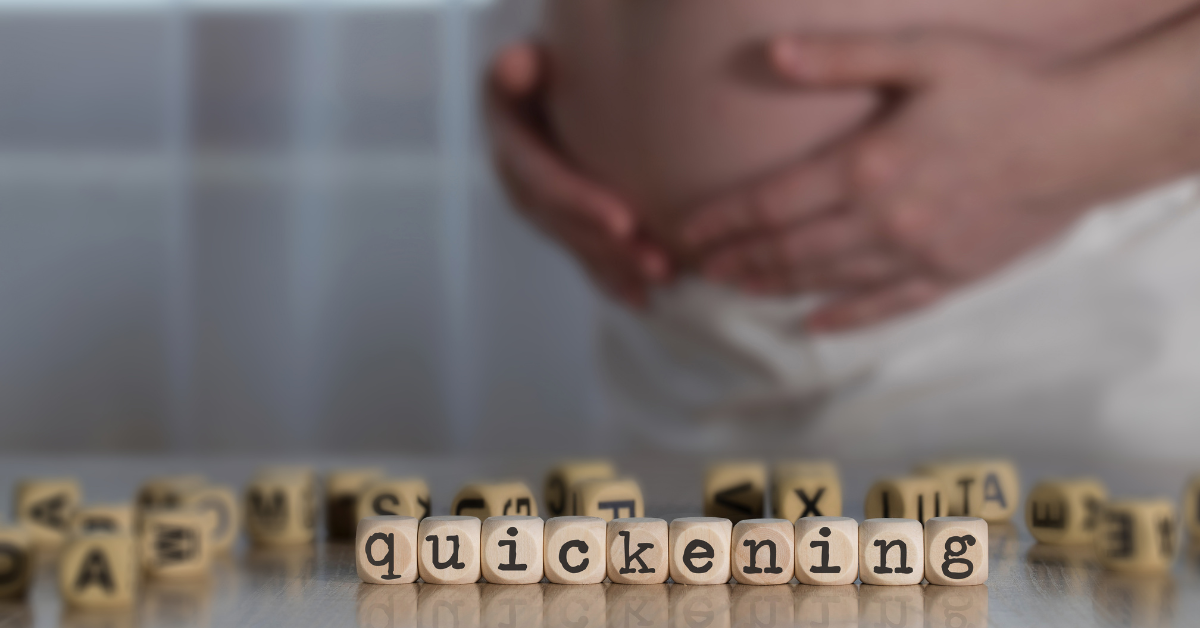Feeling your baby move for the first time? This fetal movement, also called quickening, indicates that your baby is growing. For first-time mothers, quickening usually occurs during the 18–22 weeks of pregnancy.
According to a study, it was revealed that nearly 70 percent of mothers experience such fetal movements during the 18–20 weeks of their gestation period.
However, women who have been pregnant before are likely to experience quickening as early as 16 weeks due to increased sensitivity. Some women also experience this as late as 22–24 weeks, which occurs if they have a thick abdominal wall.
Read this article to understand quickening in depth and when you can feel your baby’s first kick and movements.
Quickening: What Does It Feel Like?
Quickening is similar to several sensations, including fluttering, bubbles, swishing, or tiny taps at the same time or simultaneously. While these early movements are usually gentle and irregular, some women might mistake them for gas or digestive troubles. As the pregnancy progresses, these fetal movements turn too intense and pronounced and may feel like kicks and rolls. These movements are typically experienced low in the abdomen because of the position of the uterus, which is usually low at this stage of pregnancy.
Moreover, babies have their own sleep and wake cycles, resulting in you feeling even more sensations when lying down or resting.
Fetal Movements: The Importance
Fetal movements are a positive indication that the baby is receiving enough oxygen and nutrients for the proper development of their muscles and bones. Doctors also recommend monitoring these fetal movements during the third trimester. ‘The kick count’ approach, where you should feel at least ten movements within a couple of hours, indicates your baby’s well-being. However, a figure lower than this may be a sign of distress.
Factors Influencing Fetal Movements
Several factors play a crucial role in determining the perception of these fetal movements, including
Position of the Placenta
If the placenta is located in the front of the uterus, also called the anterior placenta, it can cushion the baby’s movements, thus making it difficult to feel early.
Maternal Weight
If the expecting woman has a higher maternal weight, it’s difficult to experience these movements due to extra cushioning.
Sensitivity
Women who are more sensitive to their bodies can notice the movements earlier.
Activity Levels
The movements also depend on the activity levels, i.e., babies have their own sleep cycles, which tend to intensify when you are resting or lying down.
When To Seek Your Doctor?
While fetal movements are completely normal during pregnancy, here’s when you need to reach out to your healthcare provider if you notice any symptoms, including
Absence of a sudden decrease in movements
If you have established a regular pattern of these movements and notice a sudden decrease or complete absence of movements, it’s a sign to visit your doctor immediately.
Less than ten movements in two hours
During your third trimester, if you notice more than ten movements in a couple of hours, it may indicate your bay is in distress and requires immediate healthcare attention.
Takeaway
Feeling the baby’s movements for the first time is a special moment for every expecting mother. Also known as quickening, it’s an indication that your baby is in its developing phase. While the timing and sensations may vary, if you notice a sudden absence or decrease in movements, we recommend seeking immediate medical attention.








